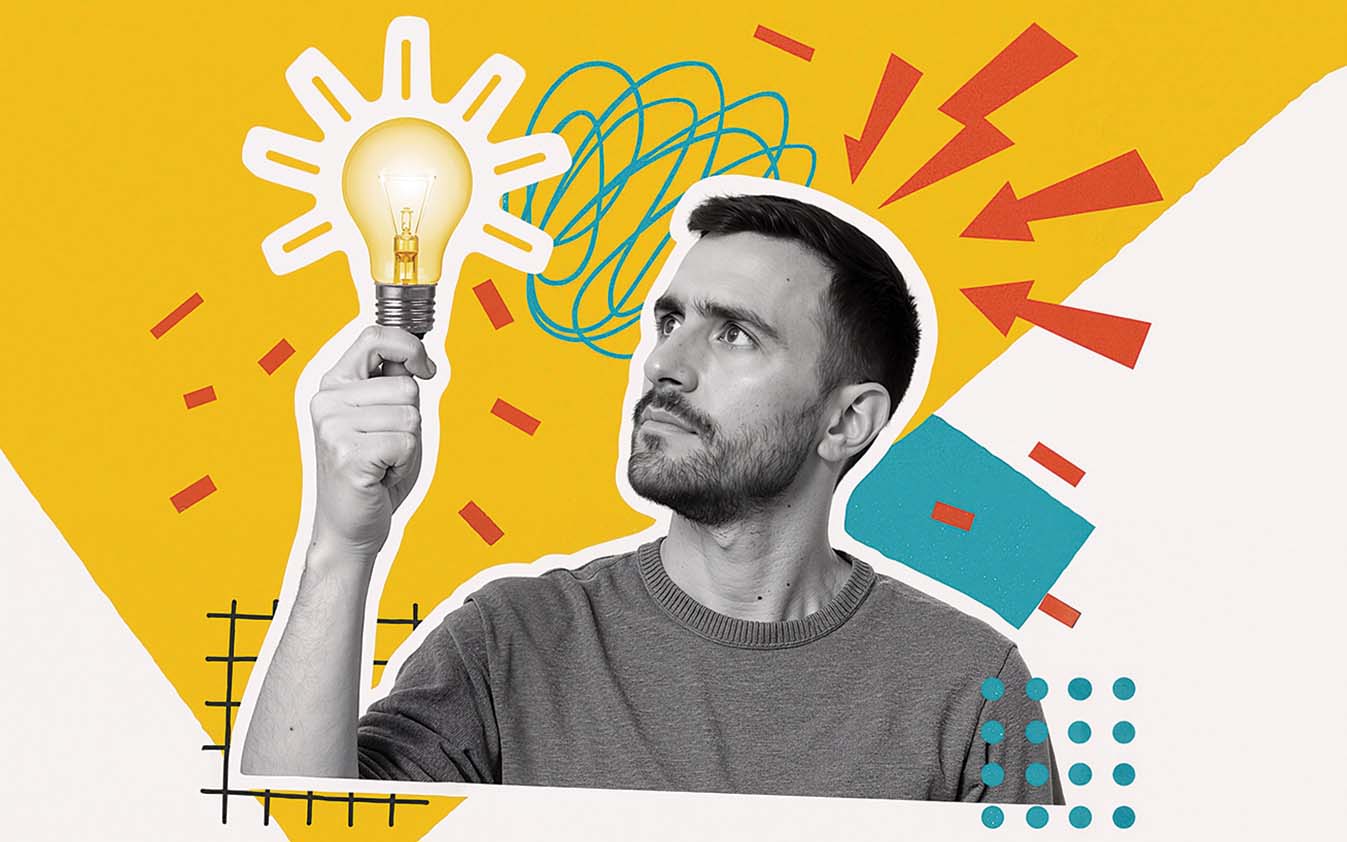Community banks and fintechs are working together to boost internal efficiency and improve the customer experience. But good partnerships don’t just run like clockwork. They require close collaboration, risk-taking and the alignment of strategic visions. Here’s what some of these partnerships look like in reality.
Secrets of 4 community bank–fintech partnerships
February 01, 2020 / By Mary J. Yerkes
Community banks and fintechs are working together to boost internal efficiency and improve the customer experience. But good partnerships don’t just run like clockwork. They require close collaboration, risk-taking and the alignment of strategic visions. Here’s what some of these partnerships look like in reality.
Today’s banking industry is all about innovation. Community banks are seeking to adapt their relationship banking model to rapidly evolving technology and changing consumer expectations.
But if a community bank doesn’t have resources in-house to develop its own products or solutions, then a partnership is in the cards. Sometimes, these partnerships can be easier said than done. How do you find the right match for your bank?
“It starts with the cultures of the organizations,” says Corey LeBlanc, chief digital and innovation officer for $5.1 billion-asset Origin Bank in Choudrant, La. “There are partnerships we pass on because their core values don’t align with ours.”
LeBlanc says Origin Bank looks at a fintech’s flexibility. “Fintechs don’t see a lot of the hurdles they have to overcome until they get into the banking environment, like dealing with regulators, core providers and limited staff,” he adds. “We need to have some assurance that our providers are going to be able to weather these kinds of storms and still be aligned.”
While this assessment process works well for Origin Bank, other community banks approach fintech partnerships in their own ways. To learn more, we approached community banks of varying asset sizes and asked them to share their experiences. Here’s what they said.
How Origin Bank is connecting customers with joy
When it comes to partnering with a fintech, LeBlanc says it’s less about technology and more about serving a need with the right experience.
“Our customers demand exceptional experiences when they walk into a branch,” he says. “How do we translate that to their digital experience?”
Origin Bank is partnering with MX Technologies, a fintech in Lehi, Utah. MX Technologies offers an online financial management tool that aggregates data across accounts, enabling customers to track and view all of their transactions and spending in one place.
Before Origin Bank considers a product or partnership, it first determines whether the potential product or partnership aligns with the community bank’s mission and core values. LeBlanc says this is because the decision-making process behind its products is a team effort.
From the start, MX was a great fit for the bank, he says, because it had the flexibility the community bank needed, and it had the core integration they were looking for. The Origin Bank team felt confident launching the financial management tool. However, while initial customer adoption was strong, it stalled shortly after launch.
LeBlanc realized they were missing the “emotional connection” for the customer, so the community bank set out to create that feeling through an added incentive. Customers who downloaded the app during its initial launch or during Origin Bank’s 30-day campaign were eligible to receive a cooler with the bank’s branding or a gift card worth the same value. With the extra incentive to use the app, the community bank saw a 63% increase in adoption and a 75% increase in use over the 30 days. Adoption and use continue to climb with no additional marketing, LeBlanc says.
LeBlanc recently returned from Utah where he met with MX staff to discuss the product’s next iteration. Origin Bank is building on its initial success to better meet its and its customers’ needs.
“We’re helping our customers become financially strong,” he says. “Customers can jump in within minutes or seconds and get simple and rich views of their overall financial picture. This gives them the power to take back financial control.”
Why Eastern Bank disrupted itself
Like many other bankers, Bob Rivers began watching emerging fintechs several years ago. As chair and CEO of more than $11 billion-asset Eastern Bank in Boston, the oldest and largest mutual bank and largest independent community bank in the country, Rivers “wanted to get into the mind of the disruptive innovator.”
At the time, Don Westermann, Eastern Bank’s chief information officer, was completing his master’s in business administration at the Massachusetts Institute of Technology (MIT). Rivers met up with Westermann and took a walk through Kendall Square in Cambridge, Mass., a place known for its dense population of tech companies. He wanted to learn what the area’s fintechs were doing so he could understand how they were approaching the banking industry.
The walks continued for two years, ultimately leading to the launch of Eastern Labs, the community bank’s in-house financial technology incubator. One of its first goals was to build a digital, real-time lending and marketing platform.
“We were trying to disrupt ourselves,” Rivers says. “We would rather do it inside the bank than having it done to us.”
They brought in an outside team to build the lab and work on the platform in close collaboration with Rivers and other Eastern Bank leaders. Rivers engaged his colleagues in conversations around innovation, what it might look like for the bank and how technology might help.
Digitizing the lending process, for example, meant addressing some difficult questions: How should the community bank execute real-time loan applications and ensure quality loans? How should it meet regulatory and compliance requirements? How should it identify and market to prospective business owners?
In a relatively short period of time, the team at Eastern Bank rolled out a solution that digitized its lending process, incorporated new data sources to help manage risk and meet regulatory and audit requirements, and automated the marketing process to help identify prospective business customers.
The results were impressive: Growth in small business lending increased fourfold, loan volume growth tripled and increase in interest doubled.
In 2017, the project team spun out as Numerated Growth Technologies, an independent, venture capital-backed company.
Eastern Labs 2.0
For Eastern Labs’ next iteration, Eastern Bank brought on Ashley Nagle Eknaian, now its senior vice president, chief digital strategist and head of Eastern Labs. Under her leadership, the community bank’s vision expanded. The lab works to explore new trends, engage employees and accelerate the adoption of new technologies and digital capabilities through experimentation, partnerships and investment. Eknaian says they’ve found success because of the lab’s focus on developing building blocks for innovation and broad-based inclusion both inside and outside of the community bank.
“Everyone has to come together,” she says. “It takes the entire organization—corporate, legal, risk and compliance, information security—not just a couple of people focused on innovation.”
Eknaian engages team members to explore potential projects and new fintechs. Vendors sometimes join these meetings to give demonstrations and talk about their products. Eastern Bank also runs popular in-house innovation challenges.
To accelerate the adoption of new products and solutions at Eastern Bank and build relationships in the fintech ecosystem, the community bank partnered with MassChallenge, a startup accelerator headquartered in Boston with a strong fintech vertical.
“When MassChallenge decided to start a fintech vertical, we saw that as an opportunity to leverage the MassChallenge brand to help accelerate the ecosystem,” Eknaian says. “They can go out to their community on a massive scale and bring vendors to us.”
Part of MassChallenge’s appeal for Eastern Bank is its “reverse pitch” approach, where partners, like the community bank, define specific challenges or customer pain points they would like to work with fintechs to solve.
Currently, Eastern Bank is piloting a program with Pinkaloo, a company in Baltimore, Md., that enables financial institutions to provide their retail and nonprofit customers with charitable giving accounts.
In early 2019, Eastern Bank conducted about three months of due diligence, which included evaluating use cases, detailing components of the pilot program and discussing integration with existing systems. It launched the company’s solution with a subset of customers in June 2019. The pilot program will go through several iterations to assess and improve the customer experience and to measure performance. Eastern Bank is unable to release specific results because the pilot is still in the testing phase, but results are encouraging.
“We want to extend our mission to our customers and help them do what we do every day,” Eknaian says, “and we want to help them do it faster and more securely through our mobile banking app.”
1st National Bank of Scotia
John Buhrmaster, president and CEO of $490 million-asset 1st National Bank of Scotia in Scotia, N.Y., says partnering with newer companies like fintechs requires a bit of a leap from the community bank.
When his great-grandfather started the community bank in 1923, robbery was its greatest threat. Tellers carried guns to deter would-be robbers and participated in target practice using a shooting range in the basement. You can still see chips in the walls where the bullets struck.
Today, cybersecurity attacks are the most significant threats banks face, Buhrmaster says.
“Our firewall is good, but it doesn’t stop everything,” he says. “We noticed suspicious emails getting through, and we wanted to step up our efforts to ensure our staff was made aware that they are a critical part of the final line of defense against intruders.”
A conversation about the situation with the community bank’s chief information officer offered a lead: Leet Cyber Security, a local startup. Leet focuses on cybersecurity education, phishing testing and penetration testing that includes hacking into a bank’s security systems—with permission—to expose vulnerabilities and weaknesses.
After multiple conversations, product references and an intensive due diligence process, Buhrmaster decided to give the startup a chance. From what he could tell, the people leading the company had character.
“You can’t use underwriting for a fintech like you would for [a core provider],” Buhrmaster says. “Sometimes you have to use your gut.”
His biggest challenge was convincing the community bank’s board of directors to use a startup instead of the nationally recognized company that they had used before. Board members had their concerns and questioned Leet’s hacking expertise.
Ultimately, the board agreed to hire the startup, but not without keeping the more well-established company on to audit the work. The decision paid off.
“We have done two phishing tests so far, and the number of employees clicking on the bad link was cut in half,” Buhrmaster says. “For the second test, not a single member of management fell for the bait.”
Buhrmaster says it’s essential for community banks to find the right vendor. “Keep your eyes open for any company of any size,” he adds. “The biggest is not always the best.”
Where to find fintech at ICBA LIVE 2020
ICBA’s national convention, coming to Orlando, Fla., March 8–12, is just on the horizon. And if you’re looking to learn more about fintechs or explore a partnership, there are plenty of opportunities.
ThinkTECH Showcase
The ICBA ThinkTECH Showcase on Sunday, March 8 will feature up-and-coming fintechs in the community banking industry. Finalists of the ICBA ThinkTECH Accelerator, a cohort of early stage fintechs selected by ICBA and member bankers, will show off their solutions in this fast-paced event.
Check out the expo hall on Sunday, March 8 and Monday, March 9 for a chance to meet and mingle with accelerator finalists and other fintechs. If you can’t wait until March, you can review community bank-friendly fintechs through the ICBA ThinkTECH Network, a database of companies that have been vetted by ICBA. You can also browse the directory of more than 200 ICBA LIVE 2020 exhibitors.
Learning Labs
Experts across all sectors of the community banking industry will host deep dives into today’s top issues during 60-plus learning labs over four days of convention. Spread across the Gaylord Palms Resort & Convention Center, these short sessions follow seven themes, including one focused on tech, payments and innovations.
Here are some fintech-focused learning labs to put on your schedule:
Innovation
Innovation Case Studies
Automate Without Breaking the Bank
Payments
Are P2P Payments a One-Horse Race?
The State of Digital Payments in Community Banking
Tech trends
Artificial Intelligence in Financial Services: Are You Ready?
Community Banking and Fintech: What’s Next?
Cybersecurity
Cyber Attack Trends for Banks
Simple Tricks to Boost Your Cybersecurity
Subscribe now
Sign up for the Independent Banker newsletter to receive twice-monthly emails about new issues and must-read content you might have missed.
Sponsored Content
Featured Webinars
Join ICBA Community
Interested in discussing this and other topics? Network with and learn from your peers with the app designed for community bankers.
Subscribe Today
Sign up for Independent Banker eNews to receive twice-monthly emails that alert you when a new issue drops and highlight must-read content you might have missed.
News Watch Today

Join the Conversation with ICBA Community
ICBA Community is an online platform led by community bankers to foster connections, collaborations, and discussions on industry news, best practices, and regulations, while promoting networking, mentorship, and member feedback to guide future initiatives.













